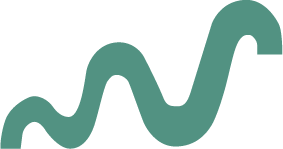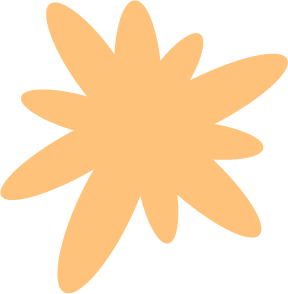WEEK 6
DESIGN APPROACH
DESIGN THINKING OR RESEARCH THROUGH DESIGN?
For the approaches/methods section, Andreas suggested I include which design approach I will use. He recommended I look into both “Design Thinking” and “Research through Design” and from there on decide which one would fit my project.

Design Thinking
Design thinking is a non-linear, iterative process that designers use to understand users, challenge assumptions, redefine problems and create innovative solutions to prototype and test. It involves five phases: Empathize, Define, Ideate, Prototype and Test. Design thinking is most useful for tackling problems that are ill-defined or unknown.
Pros:
1. A problem-solving and innovation approach that emphasises on empathy, user-centeredness, and
iterative prototyping.
2. Expands design thinkers’ knowledge through a broader and more diverse array of possible solutions and
new ideas.
3. Foresees new problems by taking an observational approach to consumers and products.

Research through Design
Research through Design is a way of materializing knowledge and insights based on hands-on design work. It gives the designer access to knowledge in a way where they have to use design as a research method to learn about things other than design.
Pros:
1. Generate new knowledge by understanding the current state (people, problem, and context) and then
suggesting an improved future state in the form of a design.
2. It aims at helping, guiding, and developing design practice.
3. Designers can learn something: about the users’ lives, about a piece of technology, about a new
mechanism or form, or about how to create an effective prototype.
Chosen Design Approach
Research through Design will be my main design approach. This approach will open an avenue for understanding related topics beyond the conventional areas of design – in my case, the role of accessibility and empathy in design. I think researching these topics will be beneficial for the ideation process, but also the making one. Design thinking will naturally be a part of this design approach, but the main premise is to use and produce research to practice the craft of a design.
“The designer does not begin with some preconceived idea. Rather, the idea is the result of careful study and observation, and the design a product of that idea.”
- Paul Rand



Understanding RtD through Mattelmäki’s Probing Kits
Tuuli Mattelmäki’s Ph.D. project at the University of Arts and Design in Helsinki aims to deliver support for empathic design approaches. In a series of case studies, carried out within different settings of industrial product development, she designed and evluated tools and techniques for engaging end-users and other stakeholders in an empathic design process. Prototypes in this study were both material (toolkits and workbooks) and immaterial (plans, and scripts for conducting sessions).

The generated knowledge
Concerns empathic design and includes a repertoire of exemplary tools.
Prototypes made
Toolkits, workbooks, and scripts for conducting sessions (techniques).
The work iteratively
Cycles of probing experiments and reflections within different domains, until an empathic design practice was informed and a repertoire of tools established.
Reflection
Observing her process, I can see that the experiments she does is to explore how to design empathic probes for a specific setting, in the context of a specific design project. Each design project is an iterative process of reflecting and moving forward and conducting experiments under almost normal professional conditions. I noticed that this cycling from one project to the next is not so much an accumulation or refinement of method. Instead, it is a particular design practice that is informed by recurrent iterations through a broad spectrum of different domains. This is how she established her own repertoire of exemplary tools.

In-Class Activity
The exercise was helpful as I got to see what I should continue working on. One of my classmates
suggested I make the interface more aestethic in the sense of creating the perspective in the
context
of design.
Instead of a webcam, what other visuals can I use that implement design into the interface?


Mini Feedback
Both my classmates and Andreas suggested I mirror the webcam, which Andreas offered to help me with.
This small interaction they had with my experiment showed me how important usability testing is. Different people can interpret the same experience very differently, and often the people testing do not think the same way as I do. This can help me reveal unseen problems with an experience.
Arduino session
Even though I worked with Arduino during Year 1 and 2, I have to admit I’ve forgotten (almost) everything. This one caught my attention since I am planning to include an interactive part into my prototype – so far thinking about either buttons or sliders.

Each of the visual impairments has different degrees of severity, hence why I can incorporate buttons/sliders so the user can adjust the interface. Andreas agreed and suggested I start experimenting with Arduino.

WEEKLY ROUNDUP
Learning more about Research through Design has made me more sure of how to approach my research and
practical work. It has made me more aware of how important my research on my three pillars is to the
creation of my final toolkit. Previously, I tend to focus more on the design itself, but now I realised
that the process before is equally (or maybe even more) important.
I am excited, but also a bit nervous, to start working with Arduino again. During the previous years, I
used Arduino in group projects and activities without fully grasping how it actually works. I think much
of it was because each of my teammates would work on what we were most skilled at, which led me to not
take the responsibility of working with Arduino. However, I’ve come to the point where I want to develop
my computational skills and I think learning Arduino would benefit me a lot in this field. I will dive
into this with an open mind and see where it takes me!
Next week I will start experimenting with Arduino – first, the basics, to freshen up my memories from
last year, and then tutorials I can use from my experiments.




